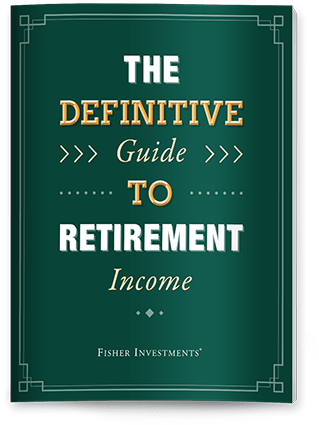Personal Wealth Management / Market Analysis
The Fed’s Funny Fundamentals
Policymakers seem unaware of their policies’ second-order effects.
Did you hear? The Fed is worried about real estate. According to the latest meeting minutes, “measures of valuations in both residential and commercial property markets remained high relative to fundamentals.” We find this rather curious. On the commercial property front, it simply rehashes a widely known fear without any solid evidence, given office REITS have basically gone sideways after sliding in last year’s bear market. And on the residential front, it pretty wildly misinterprets the impact of the Fed’s own rate hikes. We don’t see any direct stock market implications here, but it is a shining example of why investors probably shouldn’t take any of the Fed’s proclamations at face value.
It is true that, by most measures, home prices are on the up. The S&P/Case-Shiller US National Home Price Index did roll over last autumn, but it started bouncing in the winter and is inching toward its prior high now. Per the National Association of Realtors, median home prices jumped 8.5% q/q in Q2 (though they remained down a bit year-over-year).[i] So the Fed’s observation about prices seems correct. They are high.
But the “relative to fundamentals” part doesn’t add up. “Fundamentals” is a catch-all for supply and demand drivers (at least here in the real world). Typically, when prices are high relative to fundamentals, it means prices are high despite runaway supply, plunging demand or combination of the two. That isn’t the case in housing today. Rather, by all accounts, buyers are competing for an incredibly limited supply of homes for sale, fueling big bidding wars.
Given the Fed’s assessment doesn’t appear to be in line with actual supply and demand, we are left wondering what they are referring to as “fundamentals.” Our guess: Keeping with a long-running theme, they are operating on biases and opinions about how rate hikes should be affecting things, not how they actually are impacting actions and financial conditions in the real world. It would not shock us one iota if they saw this summer’s high mortgage rates, presumed these high rates should have walloped demand, and decided home prices must therefore be unsupported.
But this would be incorrect. You probably saw mortgage rates passed 7.0% again this summer and now sit at the highest level in 21 years.[ii] This has driven affordability to its most crippling levels in over 40 years—partly because high rates jacked up mortgage payments, but also because those same high rates froze supply.[iii]
Earlier this summer, mortgage delinquency rates hit all-time lows, in large part because most homeowners locked in low rates over the past 15 years. In America, those rates are overwhelmingly fixed—unaffected by rate hikes. And many homeowners are likely now benefiting (to an extent) from inflation driving their wages and salaries higher. What rising mortgage rates have done is dissuade even those marginally inclined to move due to their currently sweet setup. So they are staying put or moving and renting out their home, whacking the supply of existing homes for sale. Cash-rich buyers (immune to higher mortgage rates) or those willing to stomach a higher mortgage rate are therefore bidding up a tiny pool of inventory. So prices are going up again. Simple supply and demand. Fundamental!
For this to be unsupported by fundamentals, high prices would have to encourage a massive wave of single-family home construction, and then prices would have to stay high or keep rising despite the supply influx. Construction is inching up in fits and starts, but single-family housing starts are still well below historical norms, and this is after years of housing not coming close to keeping up with population growth.
We don’t see any immediate investment implications here beyond the general observation that rate hikes have stimulated one corner of the economy (residential real estate construction) without wrecking the rest (e.g., lending, consumption and investment), keeping growth quite resilient in the face of widespread recession expectations. But we suggest keeping it in mind as the Fed continues opining on capital markets in the months ahead. Whether real estate, stocks, bonds or other securities, the Fed has a long history of registering its opinion as to whether valuations are correct or signs of trouble. As this episode shows, there is always a strong chance that opinion is based on bias and presumptions, not reality, data and … fundamentals.
If you would like to contact the editors responsible for this article, please message MarketMinder directly.
*The content contained in this article represents only the opinions and viewpoints of the Fisher Investments editorial staff.
Get a weekly roundup of our market insights
Sign up for our weekly e-mail newsletter.

See Our Investment Guides
The world of investing can seem like a giant maze. Fisher Investments has developed several informational and educational guides tackling a variety of investing topics.





